SATCH
DAC
July 2008
Have I finally
found the best CD player in the world ? Am I close ? I am pretty
close. (that's what she said )

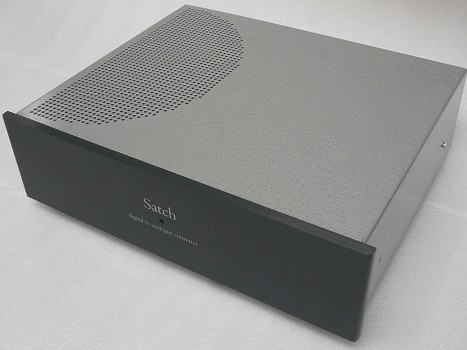
Someone signed
Thomas - who tried to build a commercial DAC using
internet forums as a motivator and opinion source - spent many
years optimizing the TDA1541 circuit and arrived at the dual
differential
balanced config with CS8414 as receiver and two TDA's as DAC . I
think It was born as a collective order of a DIY
kit by a group of audiophiles. Or so I understood from the discussion
on the forum. I am sorry if I misinterpreted the story.
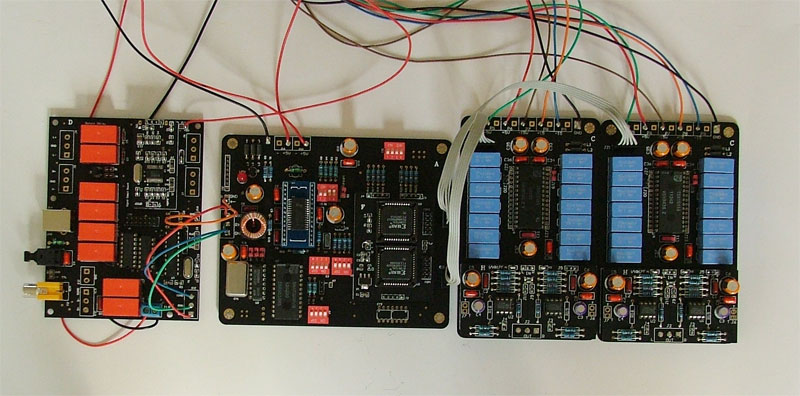
The story of
this project is
here:
http://www.vt4c.com/bb/viewtopic.php?p=13568&sid=a105dc5d441c7e6c616e714c3b4ee190
Later on I found this
(or very similar indeed)
PCB set
to be used in SATCH DAC from Hong
Kong DIYHIFISUPPLY.com
So
WHAT IS THE BIG DEAL ABOUT SATCH ???
the design idea
behind this product is very very simple.
Take the best
DAC in the world, mate it with the best receiver chip,
add overkill power supplies to each individual power receiving point
separately and put it all in a great box and voilla. You have the
SATCH. What separates it from the crowd of good chinese DACs is
that the chip comes from 1985 and the receiver chip is new. So it is
the BEST OF BOTH WORLDS in one box. Best of old and best of new.
Nobody back in 1985 when the TDA1541 was made dreamed about the
receiver chip as good as the Cristal
CS8414
chip. (the one on adapter
board). The TDA7110 of 1985 just can't compare.
Being a TDA1541
fetishist I could not resist the temptation. FINALLY !
Someone made a TDA1541 machine which is not from museum. At last I can
sniff around the PCB without inhaling dust and spider webs. At last
there are capacitors which are not dried like prunes. The Carbon C14
test reveals that this product is NEW!
So lets take
advantage of my curiosity, my naive stupidity - and let's
take this baby for a spin. Let's find out if the SATCH people did their
homework and managed to improve over the Philips CD304 MK2 - the
first TDA1541
machine that I know of.
Funny, the huge
blue caps around the TDA turned out to be 100nF by 250 V as the
datasheet of Philips advocated - precisely 100 nF. But why 250 V ???
There is 7 V DC only. Anyway, I expeccted to see something closer to 1
uF there.
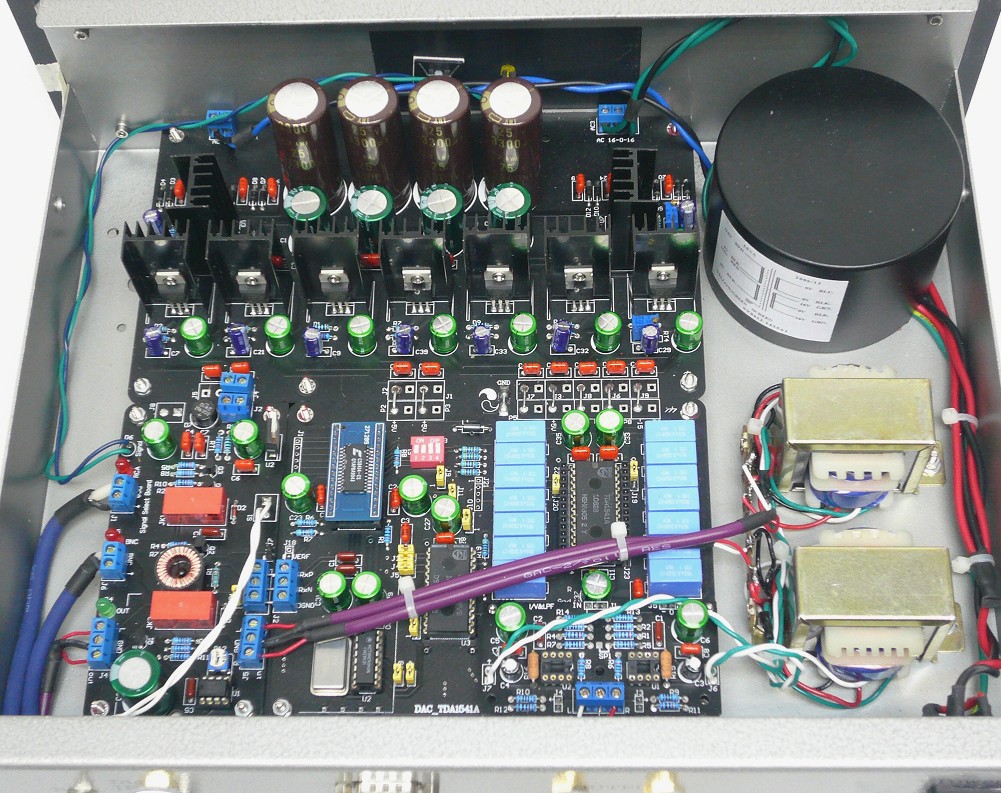
My letter:
Hello,
I
have a technical question if I may.
I
noticed strange capacitors around the DAC - the 14 decoupling caps.
They
are very large, because they are for high voltage rating. If they
were for 63 V they could be 4 x smaller (I mean physically smaller, not
capacitance). Why did you choose a 250 V rating if there is only 5 V at
the
DAC legs ?
And
from my experience these caps should be bigger.
In
some machines they are 100nF, in some machines (better ones) these
caps are 200 nF. I noticed improvements when upgrading the 100nF caps
to 400 nF.
So
why you chose only 100nF ? Is is by choice ? Wouldn't a bigger cap be
better ? At least on MSB ? Arcam ( a good company) puts 470 nF
tantalums for decoupling on 4 legs of DAC - the most significant bit
ones.
Thank
you for clarification.
I
thought that SATCH is a result of really good homework, and no
compromise approach, the ultimate TDA1541 machine, where nothing is
left to
chance.
I
worked with 100 different TDA1541 machines and my favourite
implementations are from NAIM with lots of tantalums. After
lampization, when 6 opamps are removed, the NAIM players with 1541AS1
really blow my mind.
Regards
Lukasz
Fikus
Here is what
Simon and Mr. Bran from
DIYHIFISUPPLY had to say about the cap size :
Hello Lukasz,
First,
100nF are
the standard per
datasheet. Larger values changes the
sound, but if the result is better is debatable.
Second,
while
250V is indeed
overkill, but thicker film means lower
microphonics. So there is nothing "wrong" with using 100nF/250V Film
capacitors. They maybe used to achieve a specific sound.
Regards
Simon
OK, fair enough,
we have cleared the ground at least. The proof will be
in listening.
Ordering info
from VERY professional and friendly store:
http://www.diyhifisupply.com/
Don't forget to
ask for a handful of obbligato caps when you order.
I am now (July
2008) working on lampization of the Satch.
Upon
inspection, out of the box, the DAC makes really good impression. The
box is a little ugly, nevertheless solid. But the front panel is
Wadia-like so to speak. Very nice.
The PCBs are
first class, but we are used to it from Hong Kong.
They follow some
good principles that we already learned to adore as
well:
- each power
consumer has separate voltage regulator, In total - 10
regulators . The best count so far, with Copland being second best but
it has the whole mechanism and the display to take care of because it
is the whole CDP.)
- each
electrolyte is 10 times bigger than reason dictates
- each
electrolyte has an MKP bypass (orange, probably Vishays)
- the closer to
power consumer the smaller and better the capacitor
- the resistors
are not SMD but traditional
- the chips are
in the sockets
- the digital
input is trully ballanced, XLR ready for AES/EBU (!).
- the
oversampling can be disabled (as should be)
- the clock can
be reclocked internally by a precision clock circuit but anyway - no
reclocking sounds better.
I discovered,
that the two goldish small transformers are for
signal output. I
absolutely don't need them, they are optional and unnecessary. So we
can remove them and gain extra free space for lampizator.
There are
countless jumpers that set various options like over
sampling, internal reclocking etc. By the way - there is a separate
high end clock provided if we decide not to use the clock recovered
from the signal of the transport.
Frankly - I
don't need these jumpers. I want the DAC to work absolutely
only in NOS mode without the SAA7220 in the system. So the people who
designed it could have saved some money and time and remove two
transformers, all
jumpers and dipswitches and also the whole SAA7220 chip. I
removed the 7220 and it is not consuming big power now. It was getting
very hot.
I will use the
7220 to convert some other player to become a good transport
because the 7220
generates pure SP-DIF signal on the leg 14.
I tried the SATCH DAC
with op-amp stage provided. It is simple and well made
and opamps are first class 5534.
The wiring of
the factory SATCH DAC takes 15 minutes if we skip the signal
transformers as unnecessary option.
We basically
wire the AC power input and two AC secondary outputs. Plus the
incoming SP-DIF digital signal by the coax cable. And the output from
dac to RCA's. The outer part of digital input RCA should be grounded to
the system ground (big central jumper solder point) . This improves the
"squareness" of the wave.
That's all.
The sound in
stock form: it is
really VERY
GOOD. I could not detect any fault in the music which I know
intimately. I could not complain about anything except the lack of the
finest micro details, which we call plankton
here in Poland.
The top end of the spectrum compared to even mediocre lampized CD
players is a little bit missing. It's there, but it isn't at the
same
time. Just like electrons in an atom.
But the mids are super pure and natural. The singers stand in
front of me without any veil. I wish they were without clothes too.
Bass
is clean and strong and deep. No
booom boom. So far so good.
Compared to
other TDA1541 players without lampizator - this one is in
top league, where the three NAIMs are residing alone. That means this
DAC has
huge potential. I think it is better than my reference TDA1541 player -
NAIM CD3. At least - non lampized versus non lampized - the SATCH
rules. So if it beats the NAIM before lampization, how it will be
comparing after lampization ?
NAIM CD3 does
not have a better power supply than the DAC, does not
have a better clock, TDA1541 is the same, and the output is the same.
So
chances are - the SATCH will beat the NAIM and reach for the top
position in my ranking.
Looking at the
parts, power supplies, caps, filters etc. - this player
does not need any upgrading except if you wanna go full black gate
which is another story entirely. My own trick is not to spend $$$
for B-G caps but instead I bypass the stock electrolytes in power
supplies of the TDA1541 and CS receiver with 47 uF/16V
tantalums. the result is similar to B-G job.
After a week the
DAC shows very strong performance, and improved
marginally from the first test. The Nichicon Muse capacitors which it
is full of, are good, but nothing to write home about. I feel that
Oscons and Blackgates or Elna Cerafines are better.
I would say that
with the optional super op-amp which you can order from
DIYHIFISUPPLY -
for most of people this DAC would be the perfect source without
lampizator. So you can go ahead and buy it, it has my seal of
approval. Send me good wino if you like the SATCH.
I believe that
it would be worth to order the S1 DAC - crown variant to
make
this player even better. That should cure the plankton issue.
What
I did - I ordered from ebay the old
champion - the TDA1541 non A and
non S1 which I like the most of them all. The TDA1541 inside the
SATCH is in the socket so it can be
swapped within seconds and compared. For the asking price - I would
say -
order it with S1 or even S2 and premium opamps. It would be still worth
its weight
in gold. In reality the price would be roughly 700 bucks plus 140
shipping. At this price of the dollar - a steal really.
To do justice to
such great DAC I decided to build a deluxe
lampizator based on the best octal tubes - the antique USA
12SL7GT production from 1945 - 55. The black glass Kenrads, RCAs, GEs,
WEs and Sylvanias, and also the Russky 6N9P metalbases with radioactive
cathodes.
Why the 12 and
not 6SL7 ? Because they are 10 times cheaper and work
the same way except 12,6 V heaters. But 12V is easier to build
than 6 so what the hell.



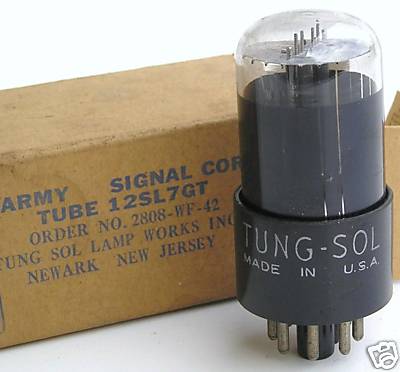
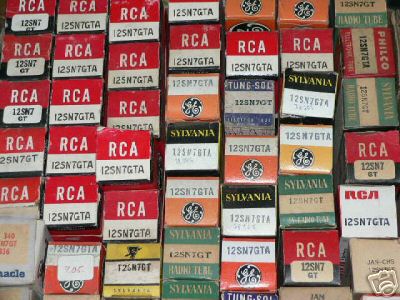

As shown
above, in my search for perfection - I added tantalum bypass to the
most critical caps around TDA1541 and I also increased the decoupling
caps
in most significant bits pins to be 600 nF like in the ARCAM designs
with TDA1541. I really trust the ARCAM people. For me the 100nF
is
not enough.
To verify it I
checked the TDA1541 chip with the scope. There are minimal
noises everywhere - on all 3 supplies and on all decoupling pins (14 of
them).
The scope trace
improves very much with every additional capacitance
added to power and to decoupling.
I tried oscons,
teapos, Rubycon standards, MKS, MKT, MKP, and
tantalums. I did not have the CERAMIC caps on hand which would be the
best for megahertz noises. Anyway - the small 2,2uF tantalums seemed to
work best so I used them.

This is the
anode high voltage supply: a simple bridge plus a CRC
filter. C1 is 800 uF, C2 is 220 uF, and R is 1K.
The rifa cap is
a bypass of the big Lytics which suppose to kill diode
noises.
After completion
I wasn't happy with the sound. It can't compete with
normal TDA 1541A players which I modified before. The sound is nice,
but no Nirvana.
I analysed the
circuit with a scope.
All power
supplies are contaminated with noise. Here is what my scope
shows:
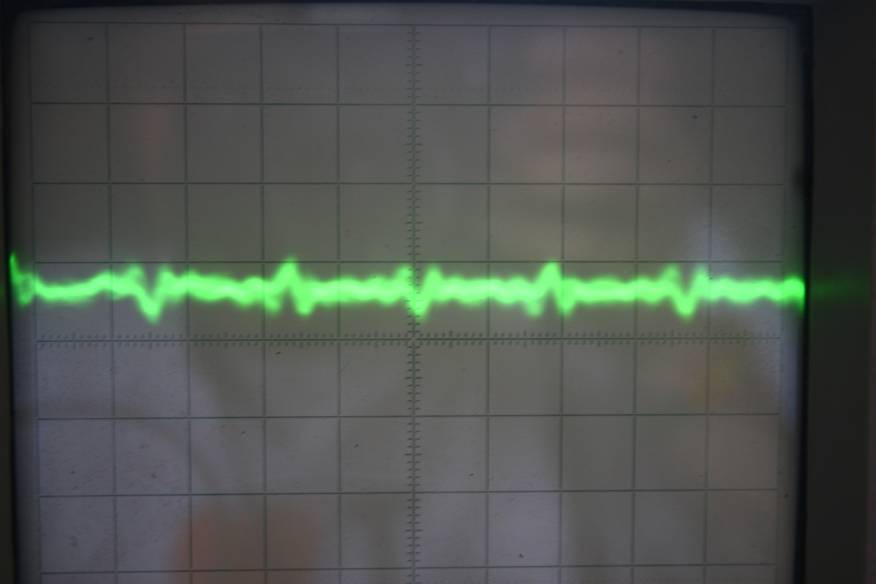
This is the -15
V supply on leg 15 of tda.

This is the +5 V
leg 28th of the DAC. I tried various caps in various
positions and I was able to go down by half with the noise.
Still, the
player is un-inspiring.

The SATCH dac is
working with my old Grundig converted to be a
transport (tweaked and improved).

This is the
already lampized SATCH preparing for the new BATTLE
OF GIANTS 2008
The description
of lampization will continue ......
O man it is difficult
to reach perfection. I spent 5 evenings trying to improve the satch. I
knew it must be better than OK.
First, I added a
2,2 uF tantalum as DECOUPLING bypass - so I increased the decoupling
capacitance in all 14 capacitors 22 times! 22 fold. Instead of the
Philips datasheet recommendation of 100nF there is 2300 nF now. But
what did Phillips people know back then in 1985 ? Nothing. They had no
idea that the TDA1541 will be their best ever. They never used it
properly
and now we poor mortals have to re do their homework.
Anyway, despite
protests from Mr. Brian of DIYHIFISUPPLY - I did the mod.
It improved the
sound, being more full and more open, but not enough.
Then I added
noise killing caps on all power supply legs of the TDA1541 directly. It
halved the noises.
Then I removed
the SAA7220p/B completely.
Still no nirvana.
Then I removed
the reclocking option. OOoo something is beginning to appear. Something
like NIRV. Not full nirvava yet.
Then I started
to question the old octal tubes. I used all my artillery - 6SN7GT,
6SL7GR, 12 SL7, 12 SN7, the 6H8C, 6N9, Russkies, Chinese, American,
British and Dutch. All were okay but not good enough.
I rewired the
lampizator to be noval and the game continued. In goes 6H6P, 6H1P,
ecc88, e88cc, 6922, 6dj8 - teslas, harmonix, brimars, sovteks, amperex.
The novals sound significantly better than the old octals. I am
surprised how much better in fact. There is more energy, more spark,
more life in them. The octals behave like riding an old horse.
Then I
remembered my Guru Evgenniy saying to me years ago:
Lukasz, if nothing
works - try the 6H2P.
So I did, for
the first time ever I used this miniature tube from Russia. Internally
it looks like no other. It has a funny looking guts.
The datasheet
reveals extreme parameters : amplification of 100, and current below 1
mA
Pinout is
fortunately the same as the others.
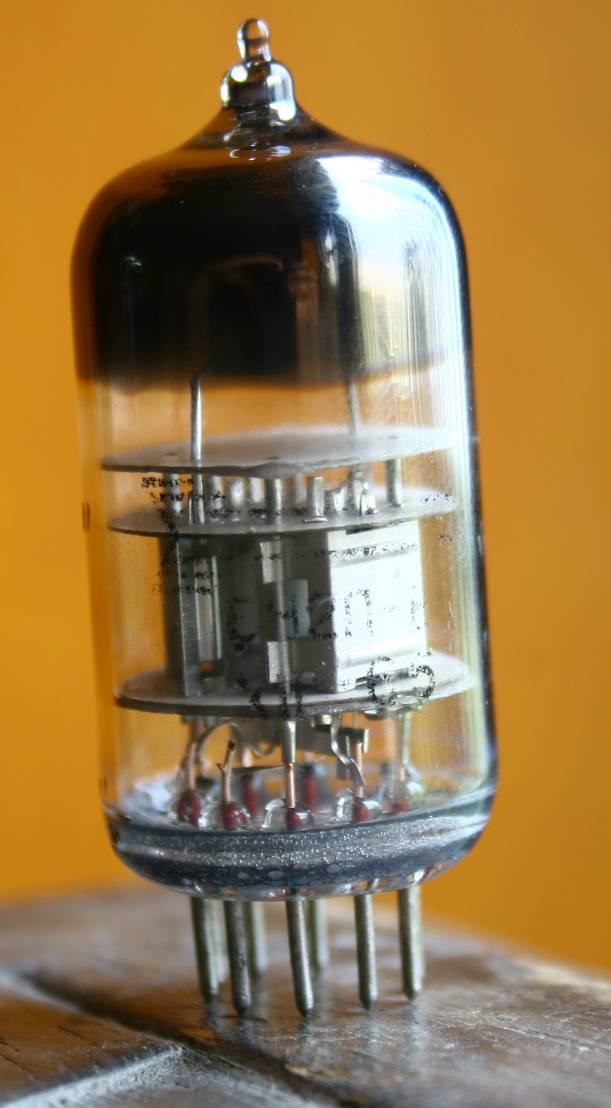
Do you
know
already where this story is going ?
You are guessing
right. That tube redefined the sound. It is the single most shocking
discovery in my whole years of lampization. It is that good.
Initially I
thought that this can not be true. I was careful to draw conclusions. I
had to triple check if something was not fooling me. Or perhaps someone
slipped something in my drink. But no. No problems. The tube is ideally
suited for working with I out of TDA1541 - the weak current signal and
resistive conversion.
It is such
synergy - as if the two were really meant to be together, like Romeo
and Juliet.
I listened all
night and every new CD I pulled sounded as If heard for the first time.
Many newbees say
this sentence, but in my case - I heard a lot. But nothing prepared me
for THIS.
Remember don't get confused - it is NOT this tube 6H2P 6 2
2 it is THIS
ONE: 6N2P 6
it is THIS
ONE: 6N2P 6 2
2
 - look at this great site:
- look at this great site:
http://tubedata.itchurch.org/sheets66.html
and the datasheet: is HERE
My lampizator is:
Ua = 150 V
Ia - 750 micro Amperes (0,75 mA)
Rk - both = 200 Ohms
Rconversion = 100 Ohms
Schematics SRPP or TOTEM POLE

There we
go - we
have a new King, and knowing what is inside the SATCH and what is
possible today - I do not believe that soon someone will surprise me
and build something better. I will just casually check the newest
wolfson - The WM8741. It is the only candidate for bettering the
TDA1541.
(ironically two months later the
Buffalo DAC came and bettered the SATCH at 1/2 the price.)
I can
only
imagine improving the SATCH itself.
1. Blackgate
everywhere
2. chokes in
power lines to each pin separately
3. s2 chip or
NON-A, (I have the regular A)
4. Copper foil paper in oil capacitors in the output decoupling (0,47uF)

Above: signal
stealing points for lampization.

Above: tubes are
mounted where the useless signal transformers used to be.

Above: there is
enough space near the power transformer for the new transformer and two
unregulated supply filters for lampizator.
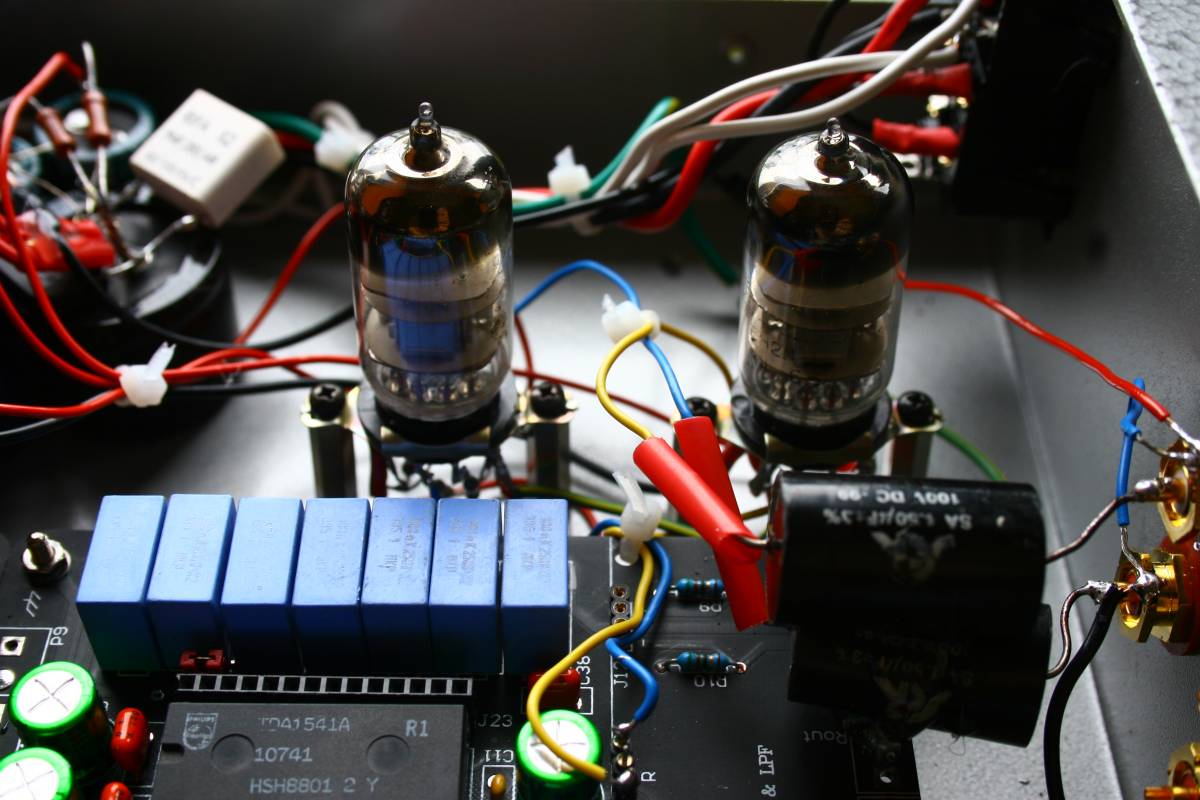
Above: another
angle view on lampizator inside satch dac. The output caps I used were
SCR KPSN tin foil 1,5 uF / 100V. I love these film and foil caps.
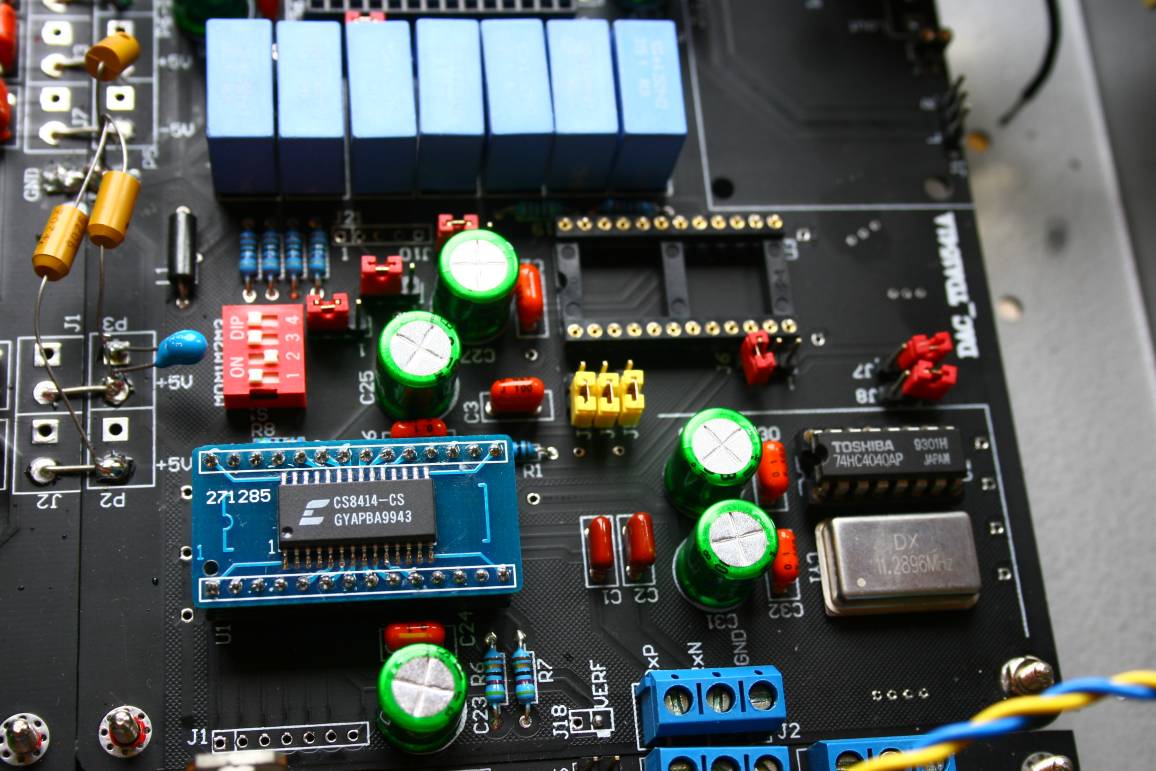
Above: the
receiver chip CS8414 on adapter board, the jumpers J7 and J8 open, and
dipswitch 1 on ON. Saa7220P chip completely removed.
The DAC ready
for singing.
I also suggest
to replace the wire in jumper J1 (supply to the receiver) with a small
coil.
Having said all
that
I have no idea WHY NOBODY makes it like that in the first place!? Why I
had to remove 60 % of circuitry before the DAC started really singing?
Why don't build
a simple no reclocking no output opamp no oversampling - dac, a super
stripped down variant and provide the tube output. And the whole world
would go crazy about the TUBESATCH. What a way to make CD history
END. 28 years after it started somewhere in Eindhoven.
I will be
watching DIYHIFISUPPLY website for the news from Mr. Brian.
Meanwhile I
remain,
Yours truly
- Doctor Lampizator in the state of Bliss.
We can argue, that a 700 Bucks DAC should play well in the first place,
and we would be right.
It is better to build such SATCH from
scratch and the green PCB comes to the rescue (from
Analogmetric). It
is basically SATCH on one PCB, which by the way is a much nicer PCB
than that of SATCH:
ENTER
"GREENDAC"
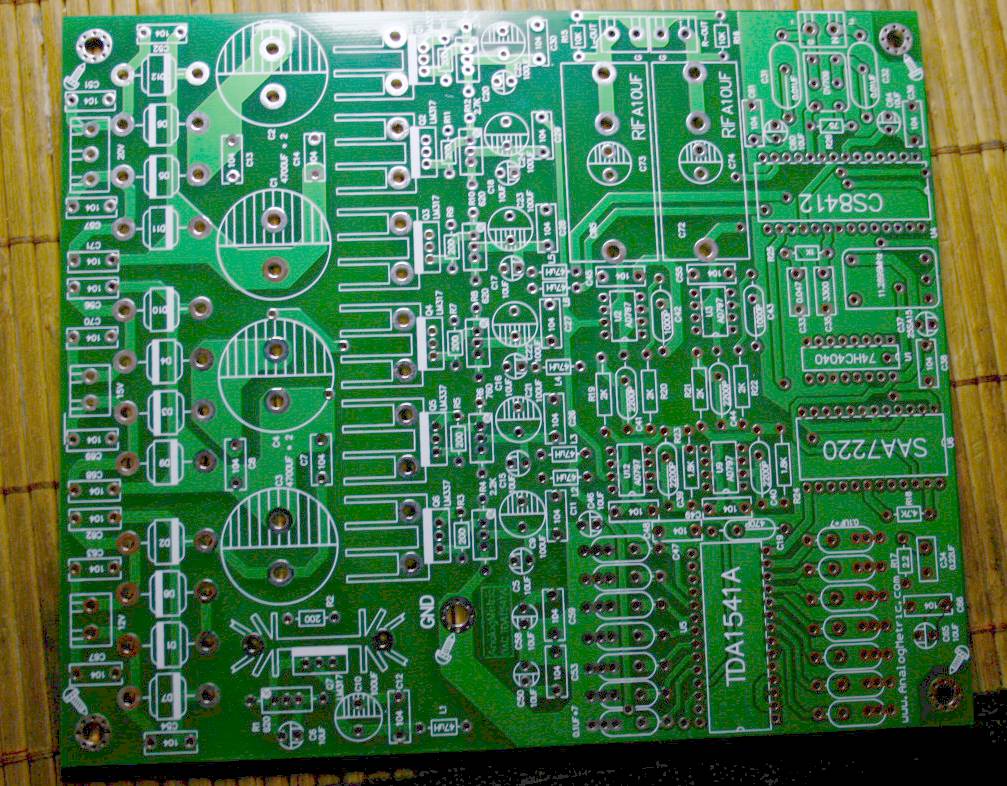
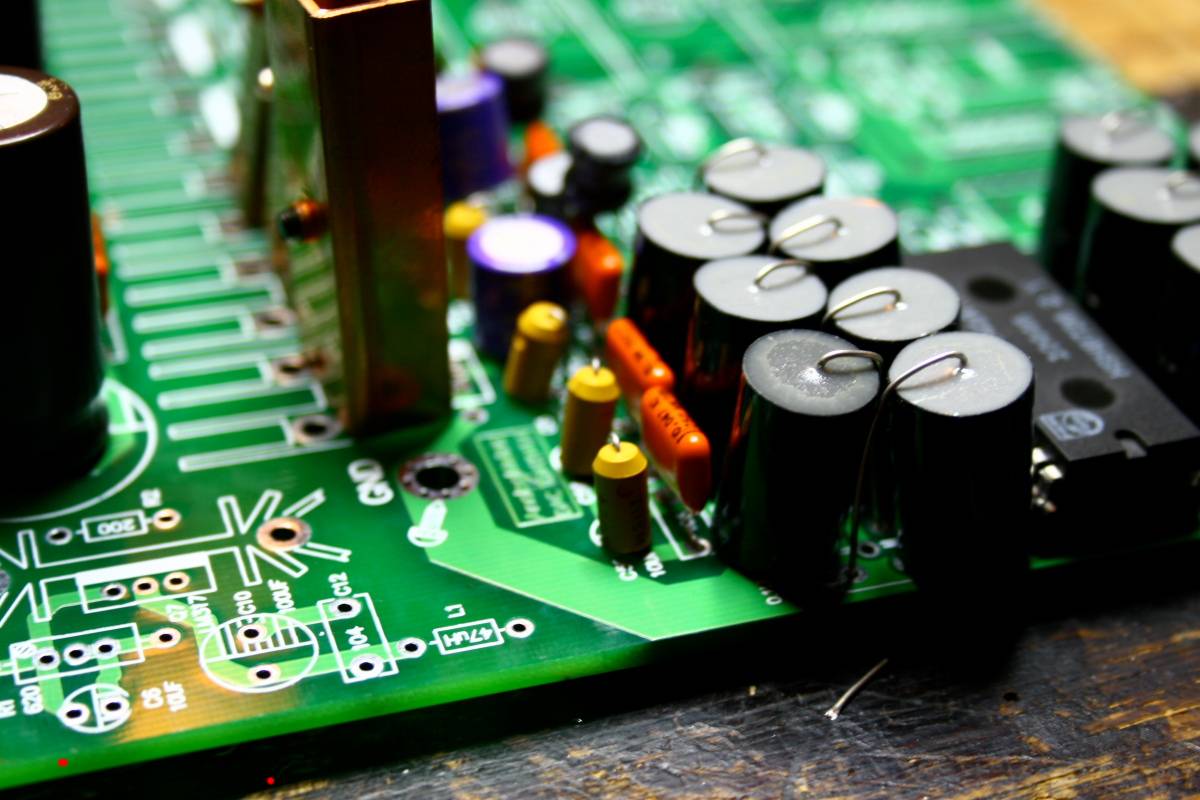
We can buy the GREENDAC for circa 15 USD and we need to populate only
less than half of parts, but this time no mercy only the best parts
need to apply. I suggest blackgates all over the place. And the S1 chip
if we can find genuine one.
We can skip the whole clock, reclocker, SAA filter and related power
supplies. I even omit the receiver for SPDIF and I will use i2S wchich
is free of charge (built into the TDA)
Analogmetric ebay store sells even kits with a bag full of all needed
parts. What a deal if you can solder !!!
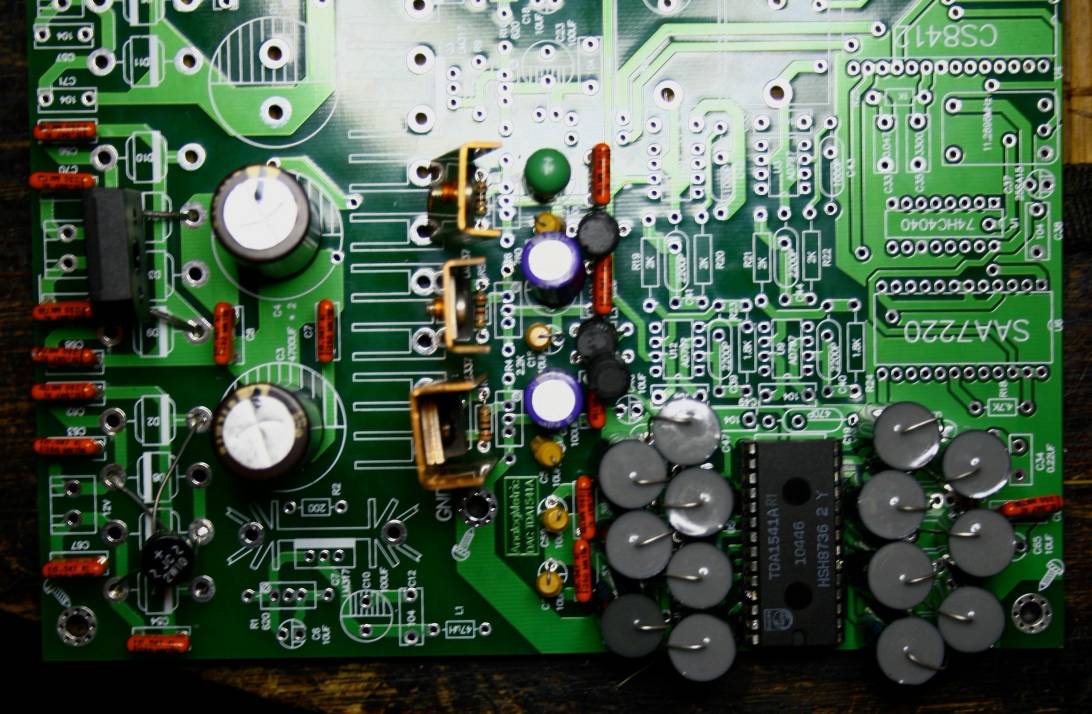
Meanwhile Brian at DIYHIFISUPPLY has lampized the SATCH and prefers it
this way, am I not surprized ?
Still, I havent got the Wino for all my efforts and their increased
business.
BACK










 2
2 it is THIS
ONE: 6N2P 6
it is THIS
ONE: 6N2P 6 2
2 - look at this great site:
- look at this great site:




